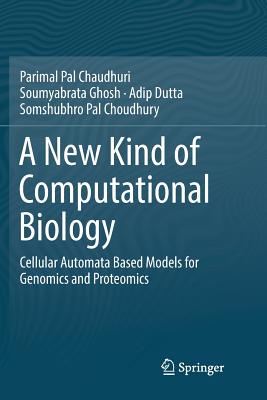買這商品的人也買了...
-
 Elements of the Theory of Computation, 2/e
Elements of the Theory of Computation, 2/e$780$764 -
 專業 ADO.NET 程式設計 (Professional ADO.NET)
專業 ADO.NET 程式設計 (Professional ADO.NET)$720$569 -
 3ds Max 建築動畫奇蹟
3ds Max 建築動畫奇蹟$750$593 -
 鳥哥的 Linux 私房菜─基礎學習篇增訂版
鳥哥的 Linux 私房菜─基礎學習篇增訂版$560$476 -
 JSP 2.0 技術手冊
JSP 2.0 技術手冊$750$593 -
 JSP 與 Servlet 500 個應用範例技巧大全集
JSP 與 Servlet 500 個應用範例技巧大全集$590$460 -
 Windows 程式設計使用 MFC (Programming Windows with MFC, 2/e)
Windows 程式設計使用 MFC (Programming Windows with MFC, 2/e)$990$782 -
 Linux 指令詳解辭典
Linux 指令詳解辭典$650$553 -
 Matlab 7 程式設計
Matlab 7 程式設計$680$578 -
 Introduction to Cryptography with Coding Theory, 2/e (Paperback)
Introduction to Cryptography with Coding Theory, 2/e (Paperback)$1,090$1,068 -
 $1,120Probability and Statistics with Reliability, Queueing, and Computer Science Applications, 2/e (Hardcover) (書況有瑕疵但不影響閱讀,不介意在下單)
$1,120Probability and Statistics with Reliability, Queueing, and Computer Science Applications, 2/e (Hardcover) (書況有瑕疵但不影響閱讀,不介意在下單) -
 Algorithmics: The Spirit of Computing, 3/e (Paperback)
Algorithmics: The Spirit of Computing, 3/e (Paperback)$1,000$980 -
 USB 2.0、Wireless USB、USB OTG 技術徹底研究 (USB Complete, 3/e)
USB 2.0、Wireless USB、USB OTG 技術徹底研究 (USB Complete, 3/e)$860$731 -
 深入淺出 Java 程式設計, 2/e (Head First Java, 2/e)
深入淺出 Java 程式設計, 2/e (Head First Java, 2/e)$880$695 -
 思科全球網路學會 CCNA 1 & 2 中文版 (Cisco Networking Academy Program CCNA 1 and 2 Companion Guide, Revised, 3/e)
思科全球網路學會 CCNA 1 & 2 中文版 (Cisco Networking Academy Program CCNA 1 and 2 Companion Guide, Revised, 3/e)$880$695 -
 LPI Linux 第一級資格檢定 (LPI Linux Certification In a Nutshell, 2/e)
LPI Linux 第一級資格檢定 (LPI Linux Certification In a Nutshell, 2/e)$880$695 -
 Linux Kernel 完全剖析
Linux Kernel 完全剖析$750$585 -
 Linux 核心詳解, 3/e (Understanding the Linux Kernel, 3/e)
Linux 核心詳解, 3/e (Understanding the Linux Kernel, 3/e)$1,200$948 -
 Introduction to the Design and Analysis of Algorithms, 2/e(IE)(美國版ISBN: 0321358287)
Introduction to the Design and Analysis of Algorithms, 2/e(IE)(美國版ISBN: 0321358287)$1,100$1,078 -
 現代嵌入式系統開發專案實務-菜鳥成長日誌與專案經理的私房菜
現代嵌入式系統開發專案實務-菜鳥成長日誌與專案經理的私房菜$600$480 -
 Embedded Linux 開發實務徹底研究 (Embedded Linux Primer: A Practical Real-World Approach)
Embedded Linux 開發實務徹底研究 (Embedded Linux Primer: A Practical Real-World Approach)$720$612 -
 Mac 玩家秘技-阿西摩的蘋果學習誌
Mac 玩家秘技-阿西摩的蘋果學習誌$480$379 -
 鳥哥的 Linux 私房菜-基礎學習篇, 3/e
鳥哥的 Linux 私房菜-基礎學習篇, 3/e$820$648 -
 程式設計師的自我修養-連結、載入、程式庫
程式設計師的自我修養-連結、載入、程式庫$580$458 -
 Google Android SDK 開發範例大全 2
Google Android SDK 開發範例大全 2$890$703
相關主題
商品描述
Description:
As computers and the tasks they perform become increasingly complex, researchers are looking to nature -- as model and as metaphor -- for inspiration. The organization and behavior of biological organisms present scientists with an invitation to reinvent computing for the complex tasks of the future. In Imitation of Life, Nancy Forbes surveys the emerging field of biologically inspired computing, looking at some of the most impressive and influential examples of this fertile synergy.
Forbes points out that the influence of biology on computing goes back to the early days of computer science -- John von Neumann, the architect of the first digital computer, used the human brain as the model for his design. Inspired by von Neumann and other early visionaries, as well as by her work on the "Ultrascale Computing" project at the Defense Advanced Research Projects Agency (DARPA), Forbes describes the exciting potential of these revolutionary new technologies. She identifies three strains of biologically inspired computing: the use of biology as a metaphor or inspiration for the development of algorithms; the construction of information processing systems that use biological materials or are modeled on biological processes, or both; and the effort to understand how biological organisms "compute," or process information.
Forbes then shows us how current researchers are using these approaches. In successive chapters, she looks at artificial neural networks; evolutionary and genetic algorithms, which search for the "fittest" among a generation of solutions; cellular automata; artificial life -- not just a simulation, but "alive" in the internal ecosystem of the computer; DNA computation, which uses the encoding capability of DNA to devise algorithms; self-assembly and its potential use in nanotechnology; amorphous computing, modeled on the kind of cooperation seen in a colony of cells or a swarm of bees; computer immune systems; bio-hardware and how bioelectronics compares to silicon; and the "computational" properties of cells.
Nancy Forbes works as a science and technology analyst for the federal government. She has advanced degrees both in physics and the humanities, and has served as a contributing editor for The Industrial Physicist and Computing in Science and Engineering.
Table of Contents:
Preface ix 1 Artificial Neural Networks 1 2 Evolutionary Algorithms 13 3 Cellular Automata 25 4 Artificial Life 37 5 DNA Computation 51 6 Biomolecular Self-Assembly 67 7 Amorphous Computing 83 8 Computer Immune Systems 97 9 Biologically Inspired Hardware 113 10 Biology through the Lens of Computer Science 139 Epilogue 155 Notes 159 Index 163
商品描述(中文翻譯)
描述:
隨著計算機及其執行的任務變得越來越複雜,研究人員開始向自然尋求靈感,無論是作為模型還是隱喻。生物有機體的組織和行為為科學家提供了一個重新構想未來複雜任務計算的機會。在《模仿生命》中,南希·福布斯(Nancy Forbes)調查了生物啟發計算的嶄新領域,並探討了一些最令人印象深刻和具影響力的例子。
福布斯指出,生物學對計算的影響可以追溯到計算機科學的早期階段——約翰·馮·諾依曼(John von Neumann),第一台數位計算機的設計者,將人腦作為其設計的模型。受到馮·諾依曼及其他早期先驅的啟發,以及她在國防高級研究計劃局(DARPA)“超規模計算”項目中的工作,福布斯描述了這些革命性新技術的激動人心的潛力。她確定了三種生物啟發計算的形式:將生物學作為算法開發的隱喻或靈感;構建使用生物材料或模仿生物過程的信息處理系統,或兩者兼具;以及努力理解生物有機體如何“計算”或處理信息。
接著,福布斯向我們展示了當前研究人員如何使用這些方法。在接下來的章節中,她探討了人工神經網絡;進化算法和遺傳算法,這些算法在一代解決方案中尋找“最適者”;細胞自動機;人工生命——不僅僅是模擬,而是在計算機的內部生態系統中“活著”;DNA計算,利用DNA的編碼能力來設計算法;自組裝及其在納米技術中的潛在應用;無定形計算,模仿細胞群體或蜜蜂群體中所見的合作;計算機免疫系統;生物硬體及生物電子學與矽的比較;以及細胞的“計算”特性。
南希·福布斯擔任聯邦政府的科學與技術分析師。她擁有物理學和人文學科的高級學位,並曾擔任《工業物理學家》(The Industrial Physicist)和《科學與工程計算》(Computing in Science and Engineering)的貢獻編輯。
目錄:
前言
1. 人工神經網絡
2. 進化算法
3. 細胞自動機
4. 人工生命
5. DNA計算
6. 生物分子自組裝
7. 無定形計算
8. 計算機免疫系統
9. 生物啟發硬體
10. 從計算機科學的視角看生物學
後記
註釋
索引











